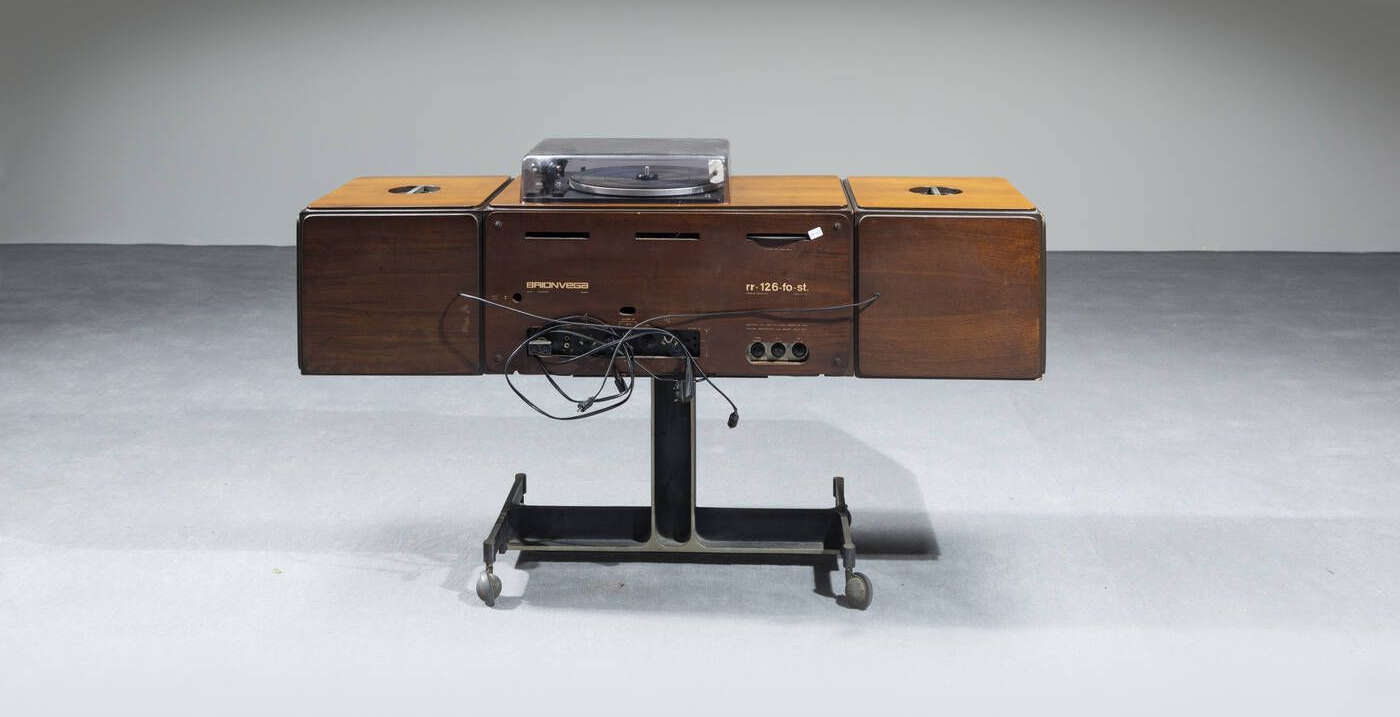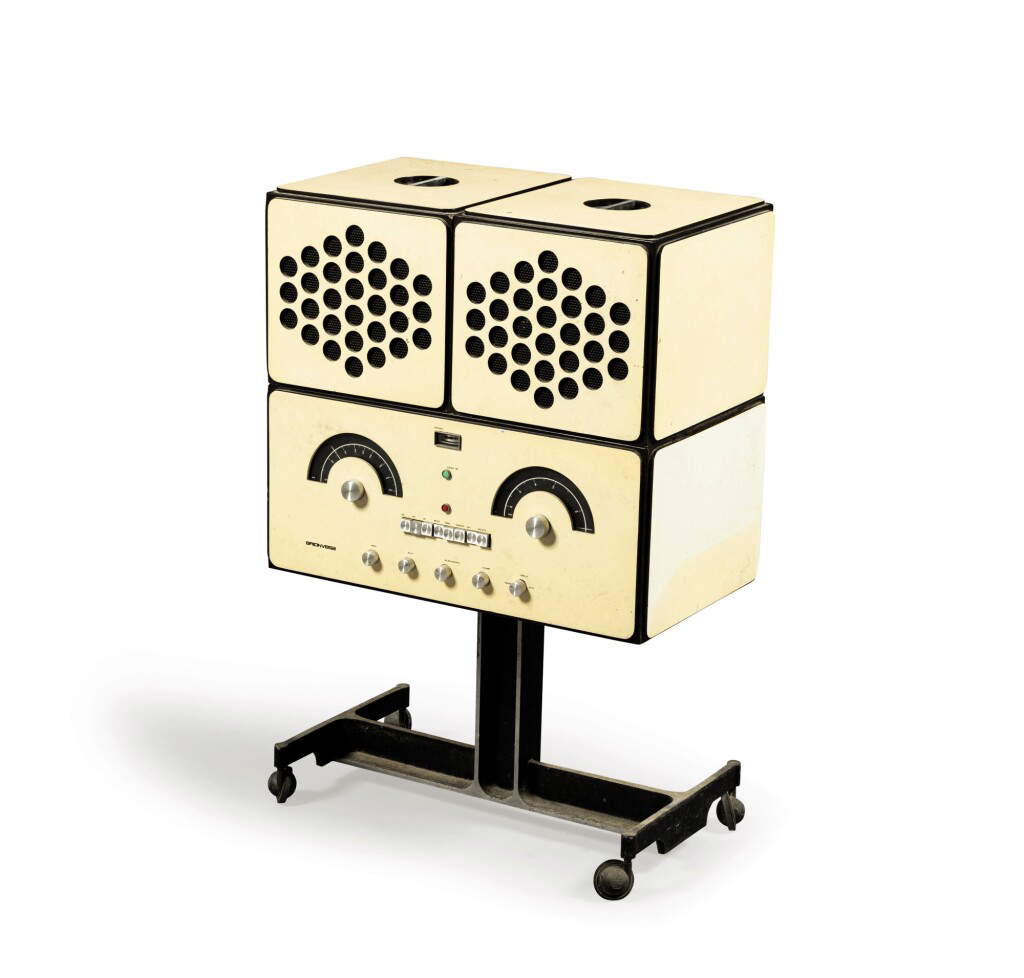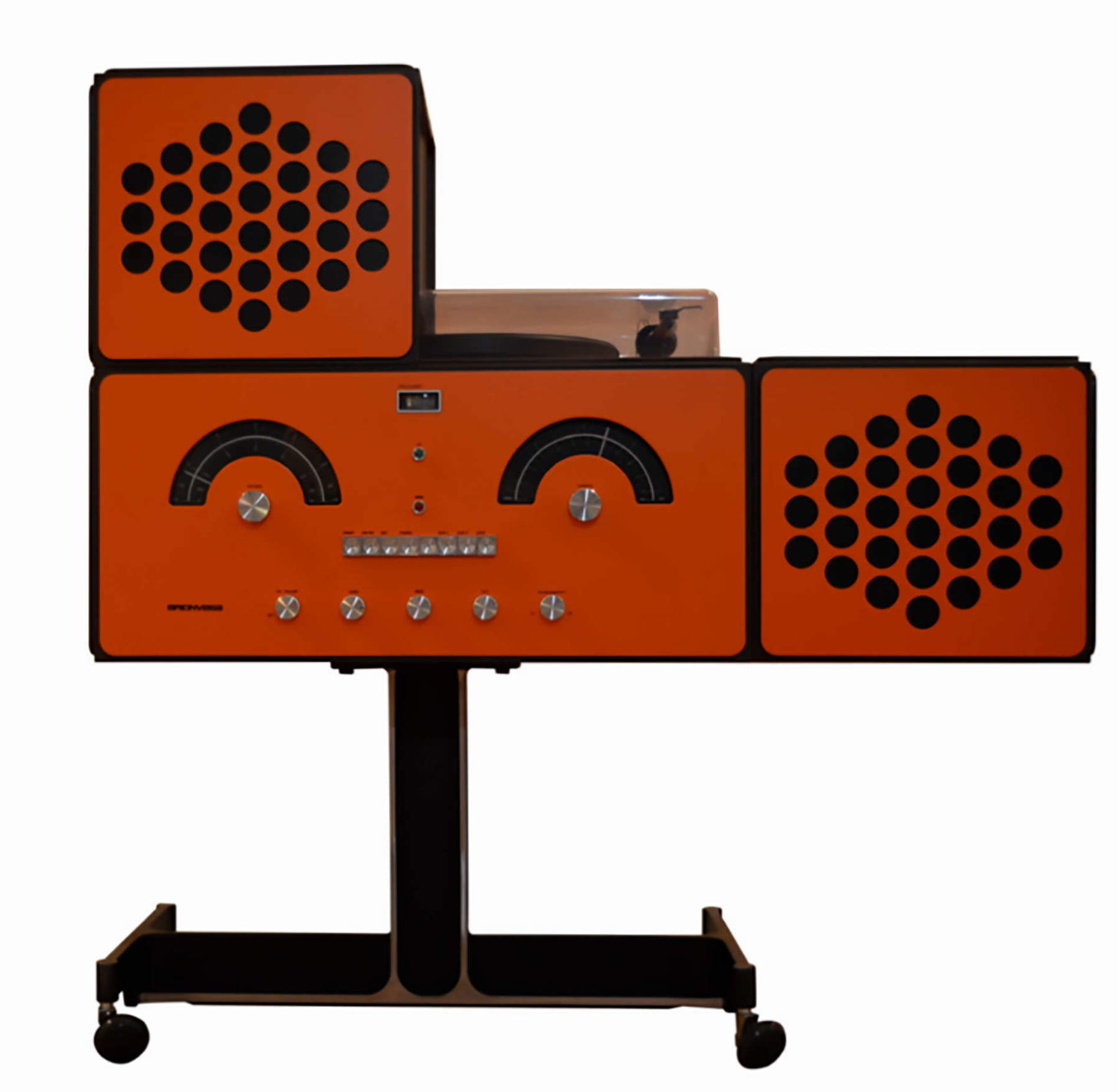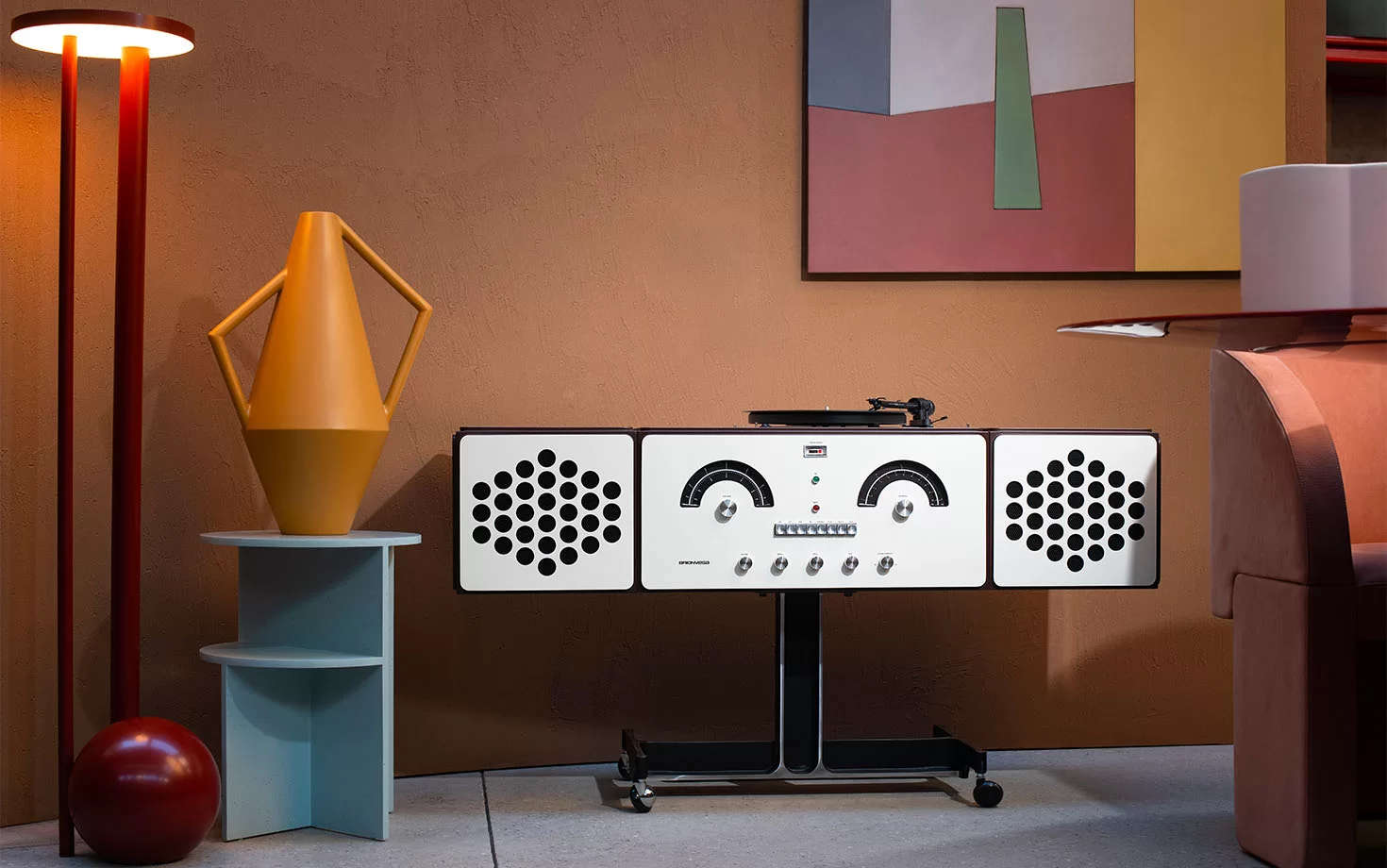Design expert Bernd Polster has written that Brionvega, the historic Italian consumer electronics brand, has distinguished itself in the world of audio products dominated by Far Eastern companies by its ability to enhance technology with a little poetry. One comes to agree with this idea, thinking especially of what is perhaps the company’s most famous product, the Brionvega RR126 radio-phonograph, a cult object of the 1960s that is still beloved by collectors today, so much so that it has been put back into production in recent times, under the name RR226. In the vast panorama of twentieth-century Italian design, few creations have captured the imagination and quintessence of the era as much as the Brionvega RR126 Radiophone. We might call it anicon of engineering and aesthetics that illuminated an era of innovation and style.
The Brionvega RR126 Radiophonograph was conceived in 1964 by two Italian design geniuses, brothers Achille Castiglioni (Milan, 1918 - 2002) and Pier Giacomo Castiglioni (Milan, 1913 - 1968), who only a few years earlier, in 1962, had distinguished themselves with another of their celebrated masterpieces, the Arco lamp. At a time when Italy was experiencing a period of industrial and cultural renaissance, the Castiglioni brothers were shaping the face of contemporary design with their creativity and modern vision, at a time when Italy was emerging as a global center of design and style and a desire for experimentation and innovation. The Brionvega RR126 Radiofonograph perfectly embodied this trend, marrying modern aesthetics with functionality and technology.




RR 126 was a stereophonic equipment that entered homes to play music. “The central body contains the turntable and receiver complex with two MA and MF tunings,” reads the essential description of the original design signed Achille and Pier Giacomo Castiglioni. “Attached to the side are two loudspeakers with speakers. These can be superimposed on the central body by closing the turntable to it, or they can be placed at a distance for the best stereophonic reception. The casing of the unit and speakers is lacquered wood. The foot made of cast aluminum.” A cool description for an object that became a sort of pop icon, a living room appliance that stood out for its geometric shape that vaguely resembled the features of a smiling face (“Objects must keep one company,” said Achille Castiglioni), an element that made the radiophone immediately recognizable and reflected the two designers’ idea that it is possible to give an expression to functions. A minimalist elegance that immediately recalls the atmosphere of the 1960s, with its wooden and tubular metal elements and plastic trim. At the time an object of great modernity, today instead sought after for its appearance that smacks of vintage precisely because it is inextricably linked to its era.
This instrument was conceived “as a self-supporting modular object, with separable volumes” and was “capable of providing innovative acoustic performance for the time such as stereophony and high fidelity,” as stated in the Fondazione Achille Castiglioni’s project sheet. “The support of the central body is made of anodized cast aluminum and consists of four ball wheels, allowing easy mobility of the device. The crates can take on three different placements: both resting on the central block to form a cube, thus offering a minimal footprint; or hooked onto the two sides to form a parallelepiped. You can move the speakers apart at will given the availability of long connecting cables.”
The unit was available in different colors (white, black, red, faux wood, yellow) and was distinguished not only by its design but also by its functionality, which was cutting-edge for the time. RR126 in fact integrated an AM/FM radio, a record player with a removable cover, and two speakers that could be moved around to give the radio player a rectangular or square or even L-shaped shape, according to one’s taste and adapting it to the decor of the house. The speakers could thus be moved over the turntable, which was hidden in a cavity between the speakers, or to the sides of the central body, docked. Its shape might have resembled that of a robot or a curious animal with large ears, with the snout obtained by a clever arrangement of the radiophonograph’s control elements . These consisted of two rotary switches with semicircular scales, for AM and FM tuning selection, with, in the center, a moving-coil tuning indicator, a range and function keypad switch, five rotary selectors for bass, treble and balance, volume and level adjustment. Also present are two built-in antennas for AM and FM.




It was, and still is, made by Italian artisans, while the quality of the audio is supervised by sound professionals. RR126 was also appreciated for the very high attention to detail: the sanding of the panels, the finishes, the lacquering and polishing, and the quality of the elements that make up the speakers. These are all features to be found also in the “descendant,” the RR226, updated to our times (although it still contains the turntable): in fact, it connects via Bluetooth to listen to music from external sources, it has an output on a stereo jack connector to be able to listen to music with headphones, it has two inputs on RCA connectors and two outputs for connection to external amplification system and external subwoofer. The price is in the thousands of euros (it starts from 15 thousand euros for the basic models), but vintage enthusiasts can find, at auction or at specialized stores, the original RR126 at more affordable prices (it lacks, of course, the Bluetooth connection, but one can boast of having a true piece of its era).
The Brionvega RR126 Radiofonograph was not just a design object, but a statement of style and identity: an object that helped define the image of modern Italy, a symbol of status and refined taste, as well as an attitude toward the future. It has been exhibited in museums around the world (among them the Triennale Museum in Milan, MoMA in New York , and the Victoria & Albert Museum in London), has been appreciated by many stars (David Bowie had one in his home: it was auctioned at Sotheby’s in 2016, a few months after his death, and fetched the monstrous sum of £257,000, the highest-priced item in the collection), and has continued to inspire designers and design enthusiasts for generations. And even today, decades after its creation. In an age when technology changes rapidly and obsolescence is the norm, the Brionvega RR126 Radiophone reminds us of the importance of creating objects of beauty and value that are enduring and not affected by the reversals of passing time.
Warning: the translation into English of the original Italian article was created using automatic tools. We undertake to review all articles, but we do not guarantee the total absence of inaccuracies in the translation due to the program. You can find the original by clicking on the ITA button. If you find any mistake,please contact us.